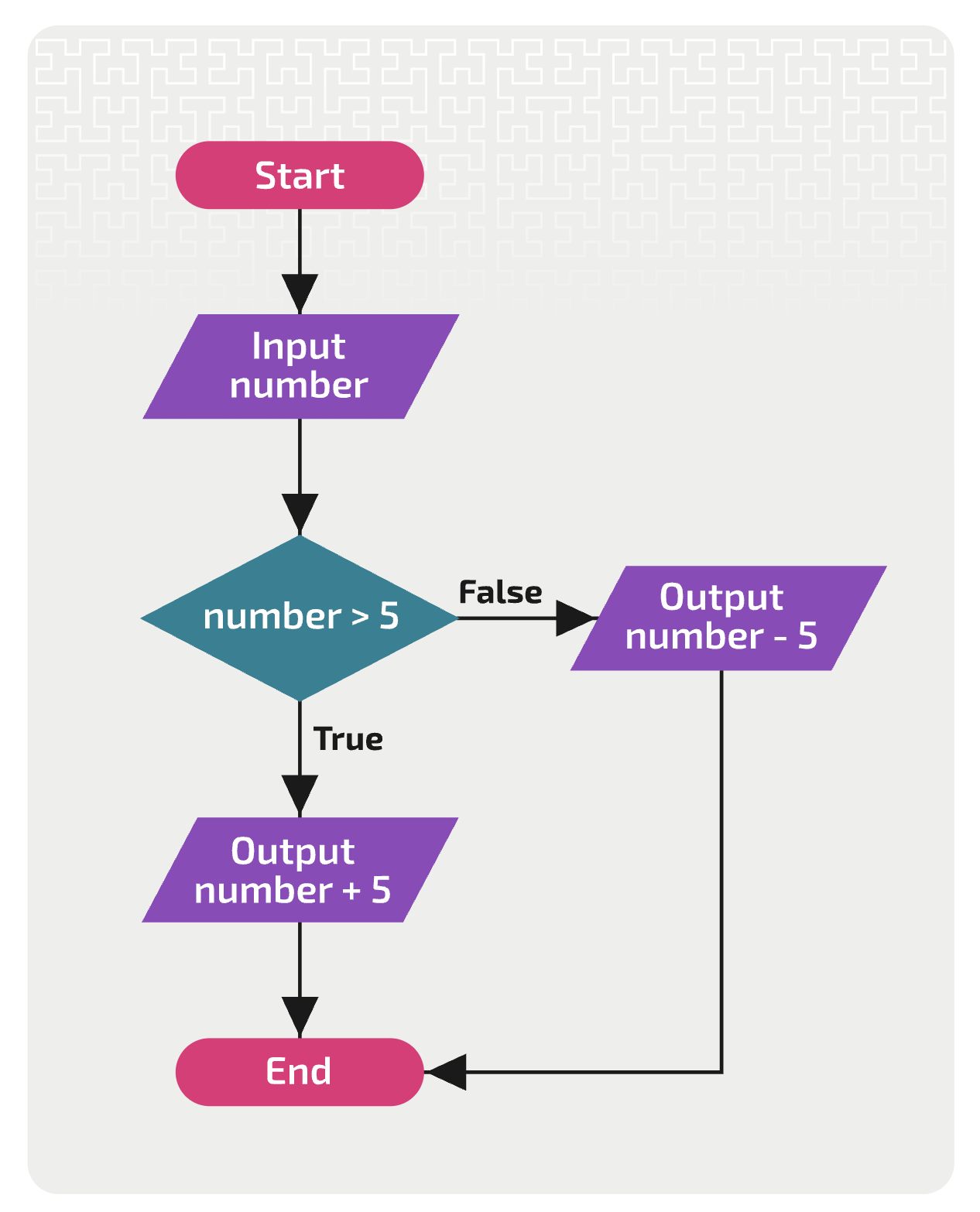OCR GCSE Algorithms: Flowcharts, Pseudocode & Complexity

Algorithm questions test your computational thinking as much as your coding syntax. OCR GCSE J277 expects you to read and write pseudocode, interpret flowcharts, compare linear and binary search, and trace sorting algorithms. This guide keeps you exam-ready, linking to our Python fundamentals article for code structures and the Boolean logic blog when logic gates underpin decision making.
Algorithm Design Foundations
Begin with decomposition and abstraction: break problems into smaller tasks, remove unnecessary detail, and identify patterns. Flowcharts visualise control flow with standard symbols – rectangles for processes, diamonds for decisions, parallelograms for input/output. Pseudocode uses structured English; learn the OCR reference language (IF…THEN…ELSE, FOR…TO loops, WHILE conditions, PROCEDURE/ENDPROCEDURE). Always include clear variable names and indentation to show block structure.
Key Exam Points
- Trace algorithms step-by-step, maintaining a dry-run table with variable states and outputs.
- Explain the difference between linear search (checks each element sequentially) and binary search (divides sorted lists in half).
- Understand sorting algorithms: bubble sort (swap adjacent elements), insertion sort (insert into sorted portion), merge sort (divide and conquer). Mention time complexity using Big O notation (O(n²) vs O(n log n)).
- Use iteration (FOR, WHILE) and selection (IF, CASE) appropriately; justify your choice in exam answers.
- Define subroutines (procedures/functions) with parameters and return values, connecting to modular programming.
- Apply defensive design: input validation, authentication, maintainability (comments, indentation, meaningful identifiers).
- Discuss test plans: normal, boundary, and erroneous data; dry runs; trace tables.
- Link algorithms to data structures (arrays, records) and real-world problems such as exam timetabling.
Algorithmic Thinking in Exam Scenarios
OCR frequently frames algorithm questions around realistic contexts such as processing attendance registers, validating passwords, or analysing sensor readings from embedded systems. Begin by restating the inputs, processes, and outputs in your own words. Identify assumptions that must be clarified – for example, whether a list is guaranteed to be sorted before using binary search. When writing your solution, include comments or short annotations to highlight the purpose of each step; examiners appreciate clear intent. Refer back to data structures in other topics – for instance, link to the memory and storage blog when explaining how arrays reside in RAM and why array size matters.
Practise adapting algorithms under pressure. Examiners may tweak familiar tasks by adding validation or extending requirements mid-question. Develop strategies such as writing helper subroutines for reusable logic, tracing through sample data to check outputs, and commenting on efficiency and maintainability for higher-mark answers. Tie your reasoning to computational thinking pillars: decomposition (split the solution), abstraction (ignore irrelevant detail), pattern recognition (use known algorithm templates), and evaluation (reflect on performance and clarity).
Flowcharts and Pseudocode Mastery
When reading flowcharts, follow arrows carefully and annotate each step with variable updates. Practice converting flowcharts to pseudocode and vice versa. OCR may provide partially completed algorithms; you must fill gaps while maintaining logic. Always pay attention to loop termination conditions – off-by-one errors are common. Connect your algorithm to hardware knowledge from the systems architecture guide by explaining how efficient code reduces CPU cycles.
Complexity analysis differentiates top grades. Provide qualitative comparisons: bubble sort is simple but inefficient for large lists, while merge sort uses additional memory but scales better. Mention best, average, and worst-case scenarios if asked to explain performance.
Example Question & Answer
Question: Write OCR-style pseudocode for a program that reads ten temperature values, outputs the average, and identifies how many readings exceed the average. Explain how you would test your solution (8 marks).
Model answer:
DECLARE temps : ARRAY[10] OF REAL
DECLARE total : REAL ← 0
FOR index ← 0 TO 9
OUTPUT "Enter temperature"
INPUT temps[index]
total ← total + temps[index]
ENDFOR
DECLARE average : REAL ← total / 10
DECLARE aboveCount : INTEGER ← 0
FOR index ← 0 TO 9
IF temps[index] > average THEN
aboveCount ← aboveCount + 1
ENDIF
ENDFOR
OUTPUT "Average:", average
OUTPUT "Readings above average:", aboveCount
Testing: normal data (a mix of temperatures such as 12.5–18.0), boundary values (all equal readings testing the > condition), and erroneous input (non-numeric) to ensure validation.
Common Mistakes & Tips
- Forgetting to reset counters or accumulators before loops.
- Using binary search on unsorted lists – always sort first.
- Not returning values from functions, leaving dependent code without data.
- Mixing up indentation, making flow difficult to follow; maintain consistent tabulation.
- Ignoring efficiency; mention why merge sort or binary search is preferable when appropriate.
- Skipping validation when reading user input, reducing robustness marks.
- Failing to document test plans; examiners award marks for justification of test data.
Further Practice
Link to relevant site pages:
